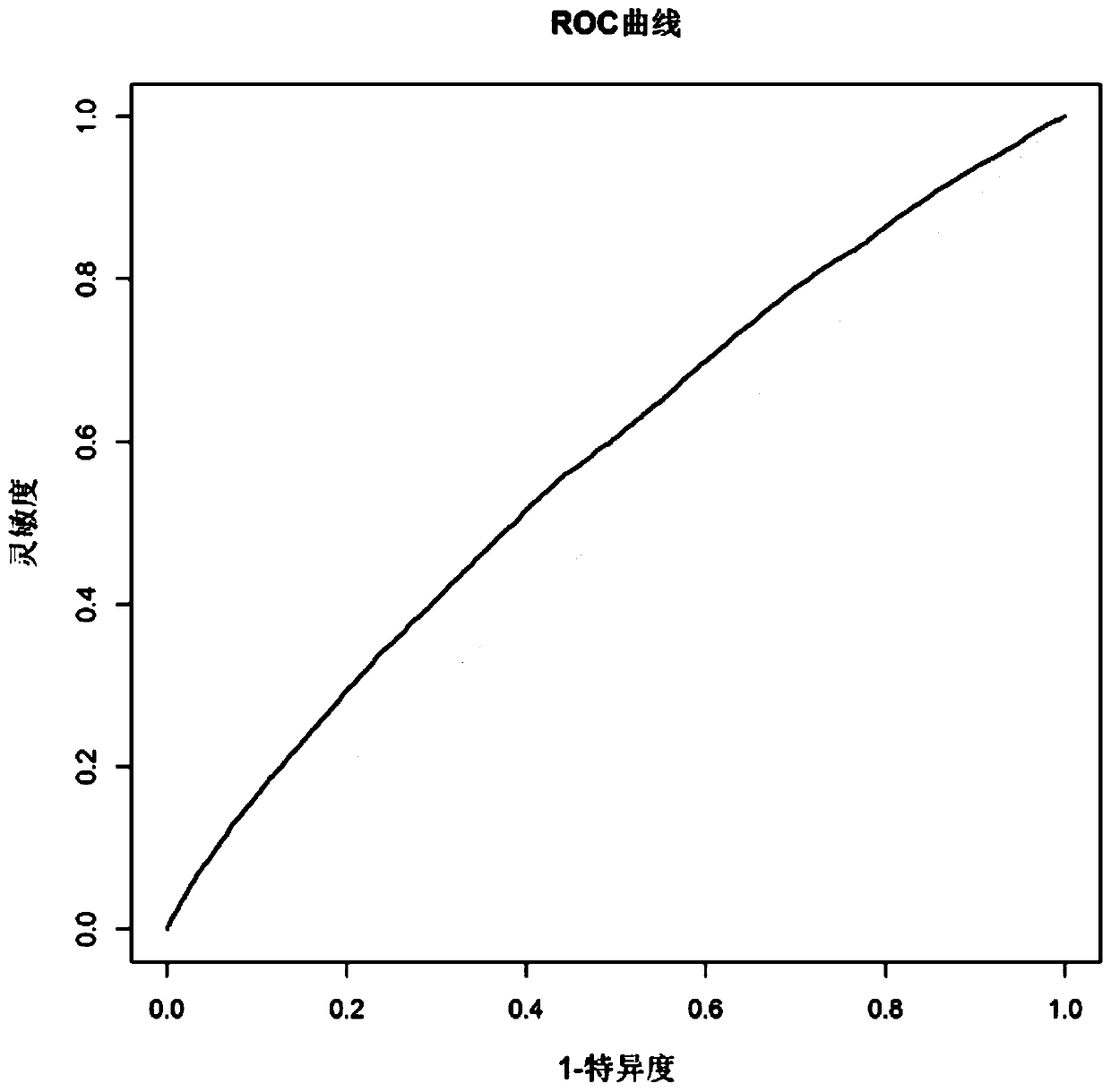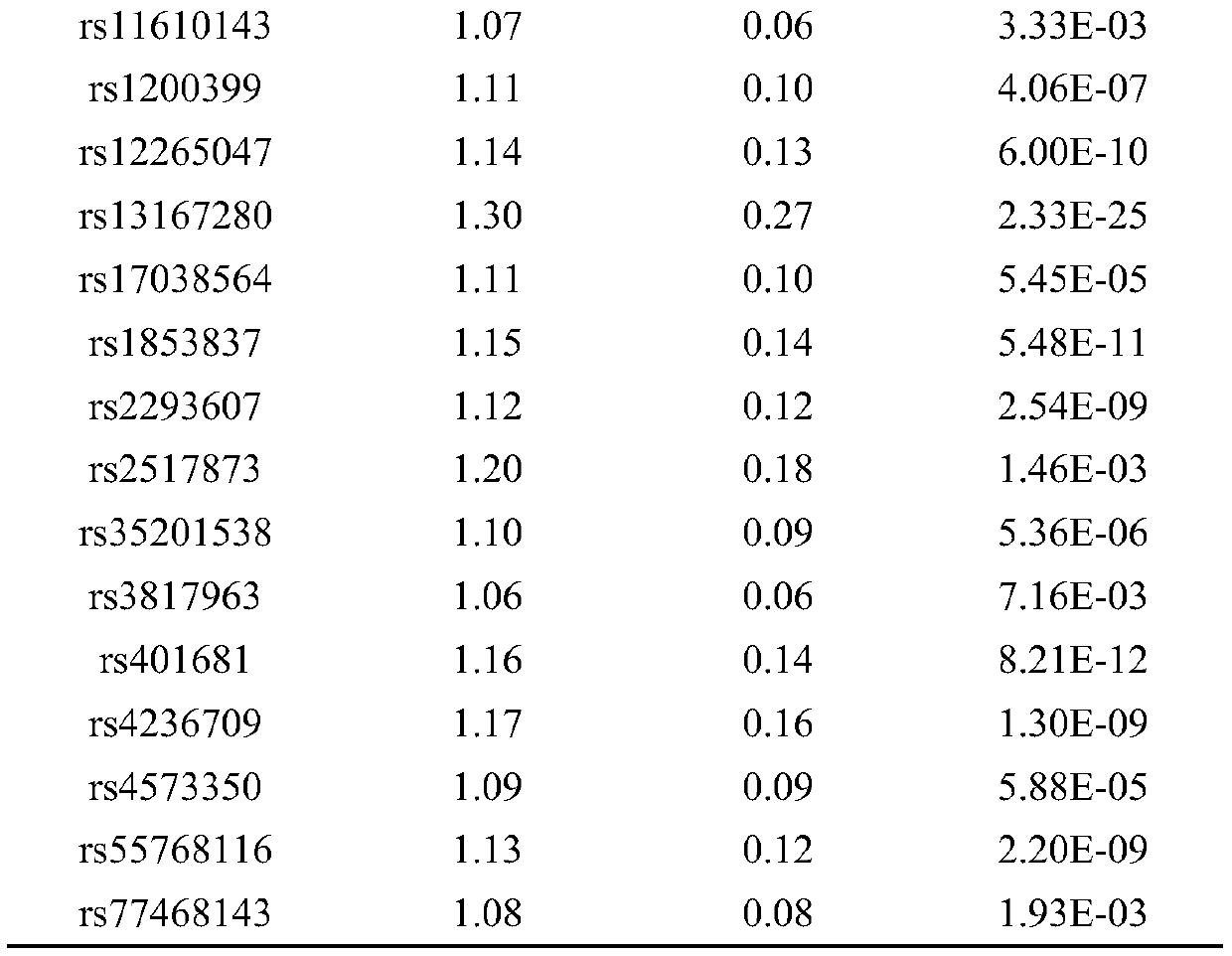SNP marker for assisting in diagnosing non-small cell lung cancer and application thereof
A technology for non-small cell lung cancer and auxiliary diagnosis, which is applied in the field of SNP markers and can solve the problems of differences in cytological morphology and other issues
- Summary
- Abstract
- Description
- Claims
- Application Information
AI Technical Summary
Problems solved by technology
Method used
Image
Examples
Embodiment 1
[0059] The collection of embodiment 1 sample and the arrangement of sample data
[0060] The inventor collected a large number of non-small cell lung cancer blood samples from the Affiliated Cancer Hospital of Nanjing Medical University and the First Affiliated Hospital of Nanjing Medical University from April 2005 to August 2017, and participated in the screening of chronic non-communicable diseases from the same period Peripheral blood samples were collected from the community population of the project. After sorting out the sample data, the inventor selected 19,546 samples that met the following criteria for genome-wide microarray scanning:
[0061] 1. Selection of research samples
[0062] (1) Clinically diagnosed as non-small cell lung cancer;
[0063] (2) Healthy controls matched with the age and gender of the case;
[0064] The demographic data and clinical data of these samples were collected systematically.
Embodiment 2
[0065] Whole Genome Scanning of SNP in Example 2 Peripheral Blood DNA
[0066] Among the 10,248 eligible non-small cell lung cancer patients and 9,298 healthy controls mentioned above, the two groups were matched in age and gender. These two groups of people were passed through Illumina GSA v1.0 chip detection obtained relevant results. The specific steps are:
[0067] 1. Add hemolysis reagent (i.e. lysate, 40 parts) to the leukocytes stored in the 2ml cryopreservation tube. The volume of the solution was adjusted to 2000ml, the same below), and it was completely transferred after inverting and mixing.
[0068] 2. Removal of red blood cells: Fill the 5ml centrifuge tube to 4ml with hemolysis reagent, mix by inverting, centrifuge at 4000rpm for 10 minutes, and discard the supernatant. Add 4ml of hemolysis reagent to the precipitate, invert and wash again, centrifuge at 4000rpm for 10 minutes, and discard the supernatant.
[0069] 3. Extract DNA: add 1ml extract solution ...
Embodiment 3
[0079] Example 3 Further analysis of SNP and the incidence of non-small cell lung cancer by using the risk scoring method
[0080] Based on the above results, the inventors selected positively associated SNPs by comparing the genotype distribution frequencies of the two groups of samples ("non-small cell lung cancer case group" and "healthy control group"), and regressed a single SNP in the genome-wide scanning samples. The coefficient is the weight, and the risk score is further obtained, and ROC is drawn to analyze the sensitivity and specificity of diagnosis, and to evaluate the auxiliary diagnosis effect of these SNPs on non-small cell lung cancer. The combined analysis of 16 SNP markers found that these 16 SNPs separated the healthy control group from the non-small cell lung cancer case group with an AUC of 57.9%, the sensitivity of the optimal cut-off point was 56.5%, and the specificity: 55.3% ( figure 1 ).
[0081] 因此,本发明人证明了采用rs2293607、rs10429489、rs2517873、rs4573350、...
PUM
 Login to View More
Login to View More Abstract
Description
Claims
Application Information
 Login to View More
Login to View More - R&D
- Intellectual Property
- Life Sciences
- Materials
- Tech Scout
- Unparalleled Data Quality
- Higher Quality Content
- 60% Fewer Hallucinations
Browse by: Latest US Patents, China's latest patents, Technical Efficacy Thesaurus, Application Domain, Technology Topic, Popular Technical Reports.
© 2025 PatSnap. All rights reserved.Legal|Privacy policy|Modern Slavery Act Transparency Statement|Sitemap|About US| Contact US: help@patsnap.com



